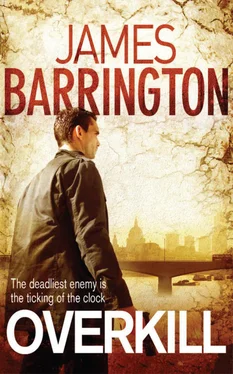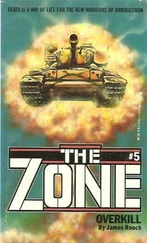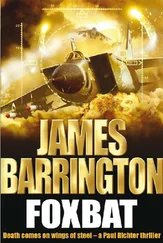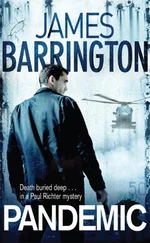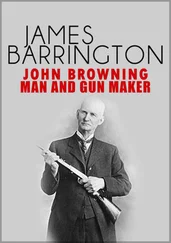Dekker and four troopers, followed by Richter, slid silently out of the front door of Le Moulin au Pouchon and ran up the road for about two hundred metres, then moved through the scrubby hedge and started up the hill.
Hassan Abbas leant back from the laptop computer, his fingers leaving the keyboard for the first time in what seemed hours, and for a few seconds he just sat there, deep in thought.
When El Sikkiyn had been conceived, the al-Qaeda leadership had insisted on the simultaneous detonation of all two hundred and three weapons placed on American soil. Abbas and Sadoun Khamil had both argued that it would be better only to detonate the majority of the weapons, leaving the others still in place and hidden, to be used as a lethal bargaining counter for the future.
But al-Qaeda believed that the only way that America could be induced to fire its entire nuclear arsenal at Russia, which was the prime objective of the plan, would be to ensure that America suffered an overwhelming nuclear attack, clearly originating from Russia. The American and Russian governments might be able to avoid a full-scale nuclear exchange if only a few weapons were exploded. They could, perhaps, negotiate some kind of reparation or settlement, particularly if the Russians could demonstrate that the attack had actually not been their doing. And that was not what al-Qaeda wanted. El Sikkiyn was designed to ensure the total destruction of both America and Russia, hence the single, massive strike.
The problem that Hassan Abbas was facing, as the executor of El Sikkiyn , was time. Ever since he had switched on the laptop, he had been trying to complete the detonation routine. But that required the inputting of two twelve-digit codes – twenty-four digits – for each weapon. It was a safeguard the Russians had built into the system, and there had been no way Abbas could reasonably argue against it.
The other problem was that before any weapon could be detonated, the user had to select ‘Individual’, ‘Group’ or ‘Total’ to determine whether just one or a number of weapons were to be fired. Abbas had selected ‘total’, but he’d only enabled thirty-two of the two hundred and three weapons, and he knew that there was no possible way he could complete the authorization sequence for all of the devices before the unknown attackers would have worked their way around to the outhouse and killed him.
Abbas leaned forward again, decision made. If he couldn’t carry out his orders, he would just have to do the best he could in the time he had left. At least, he thought, with a wry smile, nobody in al-Qaeda would be able to reproach him for it, because he knew with absolute certainty that he had only minutes left to live.
He flicked the touchpad and sent the cursor across the screen and cancelled the ‘Total’ detonation routine. With another swift movement he selected ‘Individual’ and chose the first target on the alphabetically sorted list – Abilene, Texas.
At the old mill, Ross looked at his watch for the eighth time since the group had left, then nodded to the sniper. The trooper squeezed the trigger of his rifle and sent the 7.62mm round screaming up the hill, to smash harmlessly into the solid stone wall of the outhouse. Then he reloaded and did it again, and again, and again.
Badri jumped to his feet as the first bullet smashed into the two-feet-thick stone wall beside him.
‘That means they’re coming,’ Abbas called out, never taking his eyes off the screen of the computer. ‘Ignore the sniper – he will just be trying to distract us from the men approaching. Prepare.’
With a grunt of satisfaction, Abbas pressed the last digit of the second authorization code for the Abilene weapon, flicked the cursor across the screen again, chose ‘Albany, New York’ and began inputting the first code requested by the system.
Abilene, Texas
The city of Abilene was founded in 1881 as the railhead for the Texas and Pacific Railway and as the new destination for the Texas cattle drives, taking over both the name and the business of the previous railhead – Abilene, Kansas. The city is situated in an area of low plains some one hundred and fifty miles west of Fort Worth, and straddles Taylor and Jones Counties. It is home to just under three hundred thousand people.
The two-metre satellite dish had been positioned on the roof of the small downtown office building, located a few blocks north of McMurry University, by a local company some six months earlier, and the coaxial feed cable had been run down into the smallest of the three rooms which comprised the office suite. There had been neither television set nor satellite receiver in the room when the installation had been completed, so the aerial fitters had aligned the dish with one of the commercial satellites, as they had been asked to do by the dark-skinned businessman who had leased the premises, and left, cash tucked in their pockets.
Three days, or rather nights, later, two men climbed on to the roof of the building with a signal strength meter and tools in their hands and re-aligned the dish to a more easterly satellite that didn’t appear in any of the Clarke Belt charts.
Nobody noticed that the dish had been moved, and nor did anybody take much notice when the short, slim, dark-skinned businessman took delivery of a large and very heavy packing case two weeks later. And a month after that he left the office for the last time, heading for a new assignment on the west coast, in Los Angeles. The rent on the office had been paid a year in advance, much to the delight of the freeholder, the utility bills were all settled direct from a company bank account, and what little mail arrived was automatically intercepted and forwarded to another address, so nobody had any need to go anywhere near the office suite. Not that it would have made any difference if they had.
When Hassan Abbas input the final digit of the second authorization code for the Abilene weapon, the Krutaya mainframe began an automated sequence of events. First it sent a ‘system test’ signal to the small computer attached to the selected weapon, which instructed it to carry out a check of all its circuits. Thirty seconds later the mainframe sent a ‘prepare’ signal, and thirty seconds after that the ‘detonate’ signal was sent via the satellite.
None of this, of course, was apparent to anybody in Abilene. Inside the large locked steel case in the back room of the deserted office suite, a small orange light illuminated. Thirty seconds later a red light came on, and after another half-minute a green light. The entire process up to that point had been completely silent, but within two seconds of the green light illuminating there was a barely audible click from within the steel chest. That single faint sound was the noise of the trigger assembly being actuated, and it was followed by an extraordinarily rapid sequence of events.
Within the case was a tempered-steel sphere which contained two sub-critical masses of uranium–235, surrounded by a shell of conventional chemical explosive. Outside this inner shell were further chemical explosives arranged as thirty-two critically shaped lenses. When these shaped charges detonated in a sequence that was accurate to the nearest millisecond, they focused shock waves which compressed and instantly ignited the inner chemical explosive shell, which in turn smashed together the two masses of uranium in the centre of the sphere, creating an immediate critical mass. Precisely one third of a second later the uranium tore itself to pieces as the fission reaction began.
The atomic weapon that was dropped on Hiroshima was only about 1.4 per cent efficient, but weapons technology has always been a growth industry and advances in the casing design and the shaping of the conventional explosive charges have greatly improved the efficiency of modern nuclear weapons. So although the Abilene weapon was only a fraction of the size of the Little Boy and Fat Man twenty-kiloton bombs that had devastated Hiroshima and Nagasaki respectively, it had almost exactly the same calculated yield. The yield of each weapon had been specified by Dmitri Trushenko to be sufficient to completely destroy the heart of the city in which it was positioned. Abilene, Texas, is a small city, and the weapon located there was one of the smallest of the Podstava devices and one of the few fission weapons that had been deployed.
Читать дальше
